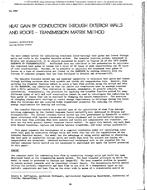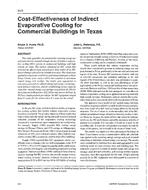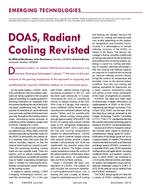Click here to purchase
The purpose of an enclosed parking garage ventilation system is to create a safe environment for the occupants by diluting concentration levels of hazardous contaminants such as carbon monoxide (CO) to a certain acceptable level. The effectiveness of a ductless ventilation system for enclosed parking garages depends on several factors such as the makeup airflow rate, number and locations of exhaust points, and number and locations of makeup air points. With the help of Computational Fluid Dynamics (CFD) analyses, this study systematically evaluates the impact of three different HVAC configurations on the airflow patterns, distribution of CO concentration, and on Spread Index – a newly developed measure of ventilation effectiveness. The HVAC configuration with a single makeup air opening with a single exhaust the makeup air gets contaminated along its path and form air recirculation zones with high CO concentration. When additional makeup air points are introduced with a single exhaust point a part of the makeup air short-circuited through the exhaust point without passing through the sources of contaminant. As a result, the average CO concentration in the breathing zone increased with a significant reduction in ventilation effectiveness. The ventilation performance significantly improved with the reduction in the CO concentration levels with the distributed makeup air and exhaust points at several strategic locations. Such high ventilation effectiveness can be achieved even at lower ventilation rates. These studies demonstrate that CFD analyses can help in identifying the potential issues with the makeup air distribution in a space and can provide valuable insights in developing appropriate mitigation strategies to create a safe environment in the enclosed parking garages.
Citation: 2021 Virtual Conference Papers
Product Details
- Published:
- 2021
- Number of Pages:
- 8
- Units of Measure:
- Dual
- File Size:
- 1 file , 900 KB
- Product Code(s):
- D-VC-21-C035


